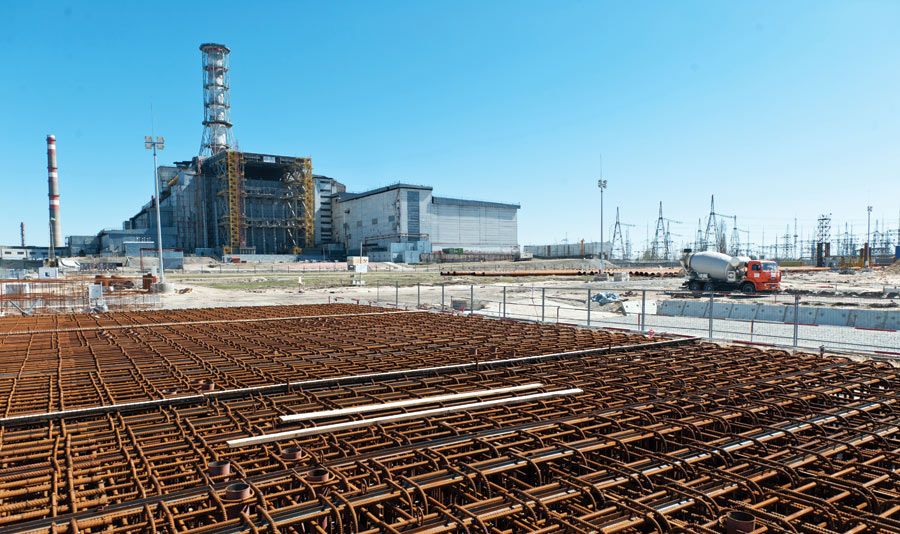
In the 25 years since the explosion at Chernobyl, it’s been a constant struggle to confine radioactive materials at the site. After years of ad hoc efforts, work has started on a massive $2 billion structure designed to seal the site for 100 years. The ruins will be dismantled with remote-controlled equipment, preparing them for permanent storage at a future site. Technology Review looks at what it takes to clean up a nuclear disaster over the years.
The French consortium Novarka will construct a 100-meter-tall structure near the ruined reactor building (in background), then slide it over the building to encase it. The rebar cage in the foreground will form the basis for a concrete foundation that will support one of 19 towers used to lift prefabricated parts into place during construction of the containment building.
View panoramas of the nuclear cleanup at Chernobyl.
The French consortium Novarka will construct a 100-meter-tall structure near the ruined reactor building (in background), then slide it over the building to encase it. The rebar cage in the foreground will form the basis for a concrete foundation that will support one of 19 towers used to lift prefabricated parts into place during construction of the containment building.
View panoramas of the nuclear cleanup at Chernobyl.
